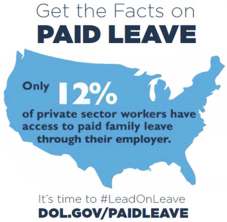By John Stanford, WIPP Government Relations
The Department of Labor and FAR Council issued final regulations that require federal contractors to disclose labor violations from the past three years. This blog updates an earlier edition with what you need to know. For more details or if this impacts your business, I encourage you to read official guidance here.
Ahhhh, Labor Day. The unofficial end of summer. A century-old government-granted day off to squeeze in another day at the pool, buy the last of the school supplies (who really needs a protractor anyway?), see the grandparents, and now – for federal contractors – an opportunity to review your company’s legal history.
It doesn’t sound quite right, does it? But for thousands of federal contractors, that is exactly what newly finalized regulations mean. I will get into to the details and timeline of the new requirement in a moment, but first, a little history on a change WIPP has watched closely.
In 2014, President Obama issued an Executive Order with the goal of barring bad companies from winning federal contracts. The following summer the Labor Department (DOL) and the FAR Council (overseers of contracting rulebook, “the FAR”) proposed how this could be achieved. Last week, final rules were published – and contractors nationwide let out a collective groan.
You see, excluding companies with a history of bad acts from winning government work – a generally universally accepted idea – is not easy. WIPP said just that in our formal comment last year. We agreed that companies that follow the rules should not have to compete against companies that break them for federal contracts. But the proposed system would place burdens on women-owned contractors and dump paperwork requirements on contracting officers.
Our comment, along with hundreds from individual business owners and other trade groups, did little to sway the government from moving forward. The new requirement detailed below goes into effect on October 25, 2016.
The regulation requires federal contractors and subcontractors to disclose violations of 14 federal labor laws and the equivalent state laws from the previous three years. Exemptions were provided for companies with contracts valued less than $500,000. Prospective federal contractors will need to declare if they had labor violations in the previous three years when submitting an offer. During an initial evaluation, contracting officers will see that declaration (a simple “yes” or “no”), without any additional detail or explanation.
Later, if a contractor were likely to win an award, the contracting officer would have to decide if the contractor is a responsible company (a requirement of all government contracts already). It is in this phase that details like appeals, remediation, or mitigating factors could be explained. Contracting officers will attempt to identify companies with “serious”, “willful”, “repeated”, and/or “pervasive” violations and not award them contracts. Companies with minor violations could still be considered responsible and win contracts.
In what the government views as a compromise since their initial proposal, the system will be phased-in over the next two years. The DOL released the following timeline:
Phased-In Implementation Schedule
- Week of September 12, 2016:Preassessment begins, through which current or prospective contractors may come to DOL for a voluntary assessment of their labor compliance history, in anticipation of bids on future contracts but independent of any specific acquisition.
- October 25, 2016: Thefinal rule takes effect. Mandatory disclosure and assessment of labor law compliance begins for all prime contractors under consideration for contracts with a total value greater than or equal to $50 million. The reporting disclosure period is initially limited to one (1) year and will gradually increase to three (3) years by October 25, 2018.
- January 1, 2017: The Paycheck Transparency clause takes effect, requiring contractors to provide wage statements and notice of any independent contractor relationship to their covered workers.
- April 25, 2017: The total contract value threshold for prime contracts requiring disclosure and assessment of labor law compliance is reduced to $500,000.
- October 25, 2017: Mandatory assessment begins for all subcontractors under consideration for subcontracts with a total value greater than or equal to $500,000.
Needless to say, our concerns remain. And before I go into a few of them, I would point out that the $50 million threshold sounds like a lot. It includes, however, companies on a multiple award contract with a ceiling amount above $50 million. Meaning a company that wins a BPA or IDIQ valued above $50 million, though not necessarily the amount of work the company will actually perform, will face the October 2016 deadline.
On a broader level, the rule simply is not ready for primetime. The Labor Department and FAR Council chose not to include what state labor law violations must be reported. It is impossible to gauge the impact of a regulation when missing significant portions.
What is in the rule, however, is equally concerning. In some cases, violations that require reporting will not be be fully adjudicated. That is, companies would have to report decisions against them that may ultimately be overturned – as nearly a third of NLRB decisions have been.
This is compounded by WIPP’s worry that simply having violations on record will “blacklist” companies without providing any opportunity to offer explanation. With limited resources and time, contracting officers may elect to avoid companies with any disclosed violations, despite the intent of the order to only bar violations of a certain severity.
Burdens on subcontractors are also being created. They must report violation history as well – directly to DOL. This was a notable change in the final rule, by making the subcontractor and the Labor Department engage each other, and not put the responsibility on the prime contractor.
At the same time the government has admitted it lacks the resources to answer all questions about weighing different labor violations from hundreds of thousands of subcontractors. Ultimately, this change could be the most damning, as many of these companies are unaware of the new requirements because they never sought business with the government in the first place.
Finally, the Fair Pay and Safe Workplaces requirement is one of many in a disconcerting trend of new regulations that specifically target federal contractors. Earlier this year, regulations raised the minimum wage solely for workers on federal contracts. New requirements regarding sick leave were also released. These make contracting with the federal government more onerous, particularly for women entrepreneurs seeking to enter the market. At a time when we want more competition and innovation in government, policies impacting only federal contractors put up barriers for entry.
Without question, WIPP supports efforts by the federal government to rid the contracting environment of businesses with a history of abusive and neglectful violations. In doing so, the government levels the playing field for the millions of businesses playing by the rules. But the government already has those tools and this rule will not achieve this goal. Instead, it will be harder to be a contractor, pushing the innovative products and services of women-owned businesses out of the federal market.
So to the federal contractors out there gearing up for a warm holiday weekend, fire up those grills, wear that final white outfit, and head into the office – it’s going to be a busy day.
John Stanford is part of WIPP’s Government Relations team in Washington, D.C., specializing in federal procurement and healthcare policy. When not bothering lawmakers about needed changes, he can be found in the woods at local golf courses.
 In a White House event with business and organizational leaders, President Trump signed an executive order creating the National Council for the American Worker, to convene experts from government, education, and private industry to focus on workforce development and training. The Council, led by Ivanka Trump, will focus on increasing job training and apprenticeships for American workers.
In a White House event with business and organizational leaders, President Trump signed an executive order creating the National Council for the American Worker, to convene experts from government, education, and private industry to focus on workforce development and training. The Council, led by Ivanka Trump, will focus on increasing job training and apprenticeships for American workers.



 t our own hard work, skill and determination could be far more effective?
t our own hard work, skill and determination could be far more effective?
 With the party conventions right around the corner, and a few months to a new President, you might think the current administration would be slowing down. But things are moving in the opposite direction. The Administration is churning out plenty of new contracting rules, and shows no signs of stopping anytime.
With the party conventions right around the corner, and a few months to a new President, you might think the current administration would be slowing down. But things are moving in the opposite direction. The Administration is churning out plenty of new contracting rules, and shows no signs of stopping anytime.